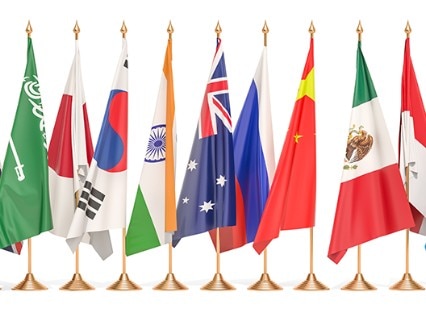But does investing in more respected brands or corporates during a crisis actually result in higher returns? Are the intangible qualities of a company, i.e. the brand strength and perception about company management, good indicators of stock performance?
Brand popularity and perception about company management are intangible qualities of companies that in many cases are the “heart” of the company. Academic literature on brand value has been plentiful whilst studies focused on survey-based data are few. On the back of this, we endeavored to evaluate brand value and industry surveys and examine the characteristics of companies deemed to have brand value, or respect, and discuss potential investment applications that can add alpha to an investors’ portfolio. Ultimately, we want to answer the following: Is company-level intangible value priced efficiently in the markets.
What did our research show? Empirically, it showed that brands or companies featured on the lists that we used to identify top brands/ companies, particularly companies that rank highly, have higher future returns based on a simple equally-weighted portfolio construct. Despite the common perception that brands are associated purely with consumer-driven industries, we noted a diverse distribution across countries and sectors. On the country front it’s clear that emerging countries have a growing presence in the brand space in recent years, especially China.
In terms of common characteristics, these brands and companies appear to have higher growth, lower risk and higher quality tilts. They also tend to have higher international exposure and higher dividend yields than the market. Lastly, we show that even after accounting for well-known risk premiums, i.e. market, value, size and momentum, strategies based on the top 30 names have statistically significant alphas.
How do you measure intangible assets?
There are several brand valuation companies which evaluate top brands around the world. Broadly speaking, the fundamental valuation steps each of these firms undertakes are not that dissimilar, with some focusing on estimating net present value (NPV) of cash flow generated by the brand, and others looking at future financial earnings attributed to the brand.
For our study, we believe that what consumers say about a brand or a company should play a significan t part in the brand valuation. Because of this, we used the Top 100 brand list from BrandZ TM (developed by Millward Brown Optimor, a WPP Company) as we find the approach of incorporating consumer surveys into their brand evaluation appealing .
BrandZ uses annual reports and other sources plus an “attribution rate” to derive the amount of earnings that is directly attributed to a particular brand. They then assess the prospects of future Branded Earnings to generate a Financial Value. Finally, because a brand exists in the mind of consumers, they determine the Brand Contribution by assessing uniqueness and the brand’s ability to stand out from the crowd, generate desire and cultivate loyalty. Multiplying the Financial Value and the Brand Contribution together, yields the final Brand Value, a figure that’s expressed in US dollars.
Akin to brand value assessment, there are multiple surveys that measure “respect” by measuring the general perception of a company from the perspective of business people and investors. We use Barron’s “World’s Most Respected Companies” data in our research as it has the longest history for covering companies worldwide, amongst all surveys we have come across. The survey asks participants to select one of four statements (Highly Respect, Respect, Respect Somewhat, or Don’t Respect) reflecting their view of each company and a mean score is tabulated for each company.
Investment applications
We collected the top 100 annual rankings from both BrandZ and Barron’s from 2006 to 2012. We mapped the brands to a company level, removing any that belong to privately owned companies, leaving only tradable firms in the investable universe. As a starting point, we used the entire list of 100 companies from BrandZ and Barron’s to test profitability of a Buy-and-Hold strategy.(1) The result for the BrandZ portfolio was an annualized return of 7.16% (vs. MSCI AC World at 3%) in a brand-value weighted portfolio and 6.88% (vs MSCI AC World of 3.19%) in an equally weighted portfolio with market-like volatility. Interestingly, the outperformance of the strategy really came to light after the peak of the global financial crisis when systematic risk subsided. Because the key screening criteria for companies on the Barron’s list is that they be the largest companies by market-cap, it was no surprise that the Barron’s portfolio delivered a market return.
The above results highlight that there are investment opportunities in companies that feature in these rankings. The above results also led us to think that if there was alpha in the top 100 names, there could be more alpha to be had in the top names of that list.
Next, we extracted the top 30 names from each list every year in their respective month and formed an equal-weighted portfolio (rebalanced annually). For both BrandZ and Barron’s rankings, focusing on the top 30 names yielded stronger returns. The improvement is especially pronounced for Barron’s where the outperformance reaches 30%, from nearly 0% previously (annualized return of 7.01% vs. MSCI AC World at 3.19%). In addition, the performance statistics confirm improvements across return and risk spectrums.
Another question we had in mind is whether or not companies that have improved their rankings or are newly listed in the top 30 can deliver better returns. To test this, we calculated the percentage change of companies’ rankings or scores and automatically gave top improver ranking to companies newly included on the list. Together, with top improvers that were featured in both years, we formed the top 30 portfolios from both BrandZ and Barron’s. Overall, the improvers / newcomers outperformed the Top 30 strategy, based on BrandZ, on an absolute return basis but at the expense of higher risk as financial stocks contributed to higher returns but also significant volatility. For Barron’s, stocks with improved rankings underperformed the Top 30 list on both a return and risk basis. Nonetheless, it is clear that improvers / newcomers have historically yielded additional returns over the benchmark.
Since the starting point for both BrandZ and Barron’s is to look for the largest brands or companies in the world, the ranking order can potentially be skewed toward larger companies. That is, in general, better ranked companies are also the larger ones. In order to mitigate the inherited size bias, we scale brand value and mean score by the company’s market cap. Consequently, companies that have a higher brand value over its market cap are ranked higher. Higher ratios could reflect the markets’ under-appreciation of brand contribution to future earnings. We selected the top 30 names on both lists based on the scaled brand value and mean score from BrandZ and Barron’s, respectively, and construct an equal-weighted portfolio. On an absolute basis, the total risks of these two strategies are higher than before and the performance based on BrandZ was impressive (annualized return of 13% vs. MSCI AC World at 3%) while Barron’s only slightly outperformed (5.75% vs. MSCI AC World at 3.19%).
In summary, we show that the rankings based on BrandZ brand value and Barron’s surveys consist of information that can help investors achieve better returns compared to the benchmark. In terms of portfolio implementation, we believe strategies based on brand names or respected companies can be employed in a core-satellite framework as a separate alpha source.
(1) BrandZ portfolio was formed at end of May and Barron’s formed at end of June; both were rebalanced annually.
(2) For more details, please refer to a 6 November 2012 Citi Research report titled “Searching for Alpha: Tangible Benefits of Intangibles” by Chris Montagu and the Global Quantitative Research team.
Article14 Nov 2012
Searching for Alpha: Tangible Benefits of Intangibles
Citi GPS Opinion Article
Citi Global Perspectives & Solutions
Contributor(s): Chris Montagu
The reputation of a company can be vital for its survival, especially so during market turmoil. As consumers cut back on spending when the economy slows, they tend to seek out those “trusted” brands that are deemed, or are perceived to be, quality-assured and less risky. For investors, the same logic applies when buying shares of a company. Uncertain times mean higher risk aversion which leads to a search for higher quality names — better safe than sorry — where the management teams are perceived to be capable of steering the company “through the storm”.
Subscribe to Citi GPS
Keep up to date with our latest insights.
Sign up to receive the latest news from Citi.
Select Preferences


